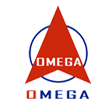Distillation Columns
About Distillation Columns
Distillation Columns
The process of distillation should be familiar to most readers. The basic concept is that we can separate a mixture of two pure liquids with different boiling points by heating the mixture to a temperature between their respective boiling points. For example, water boils at 100°C and ethanol boils at around 83°C at atmospheric pressure. If we heat the mixture to say 92°C, the ethanol will boil and be transformed into vapour (which is A distillation column is used to make this process more efficient. A schematic diagram of a distillation column is shown below. collected and condensed) while the water will remain as a liquid. This phenomenon is usually quantified by the relative volatility of the two components.
The distillation column itself is made up of a series of stacked plates. A liquid feed containing the mixture of both liquids enters the column at one or more points. The liquid flows over the plates, and vapour bubbles up through the liquid via holes in the plates. As liquid travels down the column, vapour comes in contact with it many times (due to the multiple plates). This is the critical process in distillation columns. The liquid and vapour phases are brought into contact because as one molecule of higher boiling material converts from vapour to liquid phase by energy release, another molecule of the low boiling material utilises the free energy to convert from liquid to vapour phase.
The base of the distillation column contains a large volume of liquid, which is mostly the liquid with higher boiling point (in our example, this would be water). Out of the base flows some of this liquid, some of which is heated in the reboiler and returned to the column. This is called the boilup, and is labeled V . The remaining liquid is the bottom product, labeled B .
Some vapour escapes from the top of the column and is returned to a liquid state in the condenser. Some of this liquid is returned to the column as reflux L , and the remainder is the top product or distillate D .
Vapour and liquid phases on a given plate approach thermal, pressure and composition equilibrium to an extent depending upon the efficiency of the plate.


